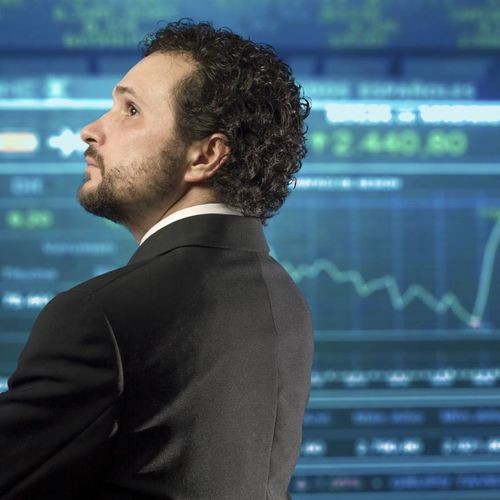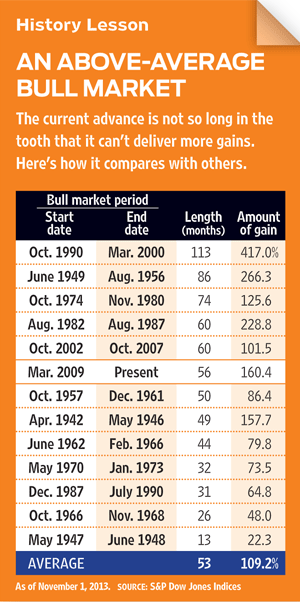5 LowRisk Funds for a Volatile Stock MarketKiplinger
Post on: 9 Июнь, 2015 No Comment

Where to find shelter amid a market that has returned to dramatic dives and ascents.
On October 15, the Dow Jones industrial average plunged 460 points by early afternoon, then rose nearly 300 points to finish the day with a loss of “only” 173 points. Two days later, the Dow soared 263 points. If your initial reaction to this kind of wacky market behavior is to scream “Get me out of here!” you’re probably not alone.
See Also: What Will Higher Rates Do to the Kip 25 Bond Funds?
I’ll discuss ways to cut volatility in your investments in a minute. But first: The unfortunate truth is that the volatility of recent weeks, while unsettling, is hardly unusual. The Chicago Board Options Exchange Volatility index, or VIX—the so-called fear index—measures how volatile options traders expect Standard & Poor’s 500-stock index will be in the next 30 days. The higher the index, the more the stock market is likely to bounce around—and the more your adrenaline is likely to surge.
Amid fears of deflation in Europe, slowing growth in China and a potential Ebola pandemic, the VIX spiked to 31 in mid October. That was the first time the index had topped 30 since December 2011, and that was during the last eurozone crisis. Since then, the U.S. stock market has been remarkably placid—and remarkably profitable. In 2013 and so far in 2014, the VIX averaged about 14.1. Those were the lowest average readings for any year since 2006. From 1990 through 2013, the VIX averaged 20.2—substantially higher than the past two years.
Advertisement
Based on volatility readings, investors haven’t been truly terrified since the U.S. came close to defaulting on its debt obligations in the summer of 2011. The VIX soared to 48, as President Obama and House Republicans seemed unable to resolve the crisis. For pure panic, you only have to look back to the 2008 financial crisis, during which the VIX peaked at a stunning 90.
Of the current pickup in the VIX, Dan Wiener, editor of the newsletter Independent Adviser for Vanguard Investors. says: “If the rest of 2014 brings us up to even average, we’ve got a bunch of volatile days to come. Deal with it.”
Volatility, at its core, is the price you pay for the generous long-term returns the stock market offers. Risk and reward go hand in hand in investing. But if the renewed instability is keeping you awake at night, you should put some of your money into funds that tamp down that volatility. Below are five such funds, starting with two risk-reducing bond funds.
Fidelity boasts few good stock funds, but its bond funds are first-class. I’m especially fond of Fidelity Total Bond (symbol FTBFX ) and Fidelity Intermediate Municipal Income (FLTMX ), both members of the Kiplinger 25. the list of our favorite no-load mutual funds. Move 5% to 10% of your stock money into one of these funds, and your portfolio’s volatility will decline. Total Bond is for tax-deferred accounts; Municipal Income is for taxable accounts. Costs are low (Total Bond charges 0.45% annually and Municipal Income charges 0.37%) and so are their yields (2.6% and a tax-free 1.5%, respectively). These funds won’t make you rich, but having some money in them will leave you less vulnerable to a stock market slide.

With less than half of its assets in stocks, FPA Crescent (FPACX ) has grown increasingly conservative as the market has climbed. That has hurt performance lately. Over the past three years, the fund returned an annualized 12.0%, trailing the S&P 500 by an average of 6.5 percentage points per year. But count on the managers to load up on stocks during the next bear market. Over the past 10 years, FPA Crescent returned an annualized 8.5%—an average of 0.5 percentage point per year more than the S&P (unless otherwise indicated, all returns in this article are through October 22).
My favorite exchange-traded fund for reducing volatility is iShares Core High Dividend ETF (HDV ). It targets high-quality stocks with sustainable high dividends. According to Morningstar, the fund holds more than 40% of its assets in defensive stocks, such as consumer staples and health care companies. The fund, which charges just 0.12% annually, yields 3.5%. Over the past three years, it returned an annualized 15.7%, which trailed the S&P 500 by an average of 2.7 percentage points per year. But the ETF has been 13% less volatile than the S&P, which suggests that in punk markets it will do better than most stock funds.
Matthews Asian Growth & Income (MACSX ) is the chicken’s way to play emerging markets. To cut risk, the fund invests 85% of its assets in dividend-paying stocks. The rest is in preferred stocks, convertible securities and bonds. Japan and New Zealand, both developed countries, account for 8% of the fund’s assets. One-fourth of its assets are in rock-solid South Korea and Singapore, and the remainder is spread among other Asian markets.
The fund has been 26% less volatile than the MSCI EAFE index, which tracks stocks in developed foreign markets, and 40% less volatile than the MSCI Emerging Markets index. Over the past 10 years, the fund returned an annualized 10.2%. That clocked the EAFE index by an average of 4.6 percentage points a year and trailed the Emerging Markets index by 0.5 percentage point per year.
How did these funds fare during the recent stock market selloff? From September 18 through October 16, all three of the stock funds did better than the S&P 500, which lost 7.3%, and the two bond funds made money. The iShares ETF lost 5.3%, FPA Crescent fell 5.1% and the Matthews fund surrendered 4.6%. If the selloff was a dress rehearsal for the next bear market, these funds look ready for prime time.
Steve Goldberg is an investment adviser in the Washington, D.C. area.














